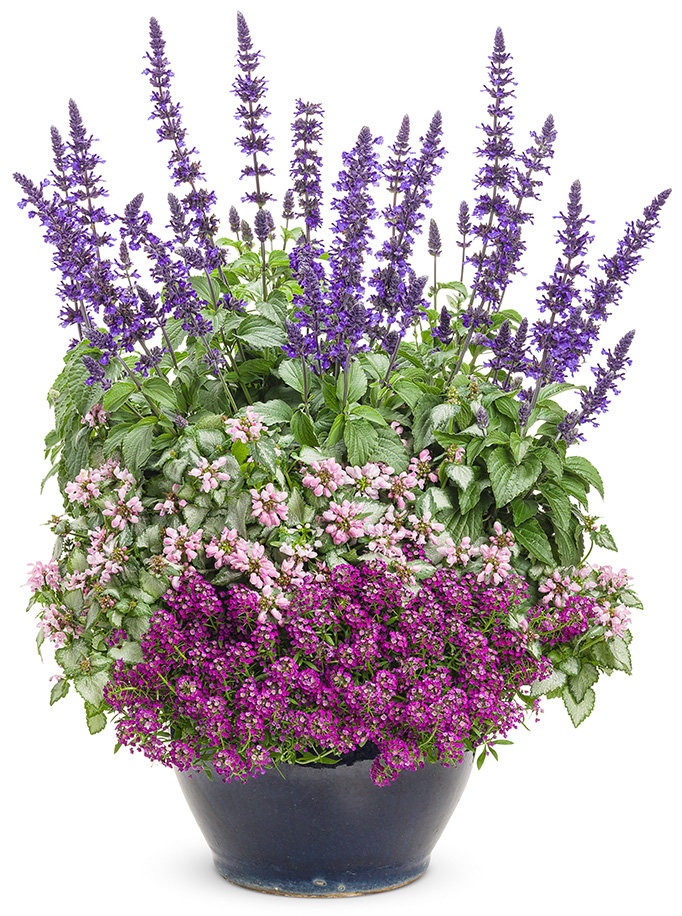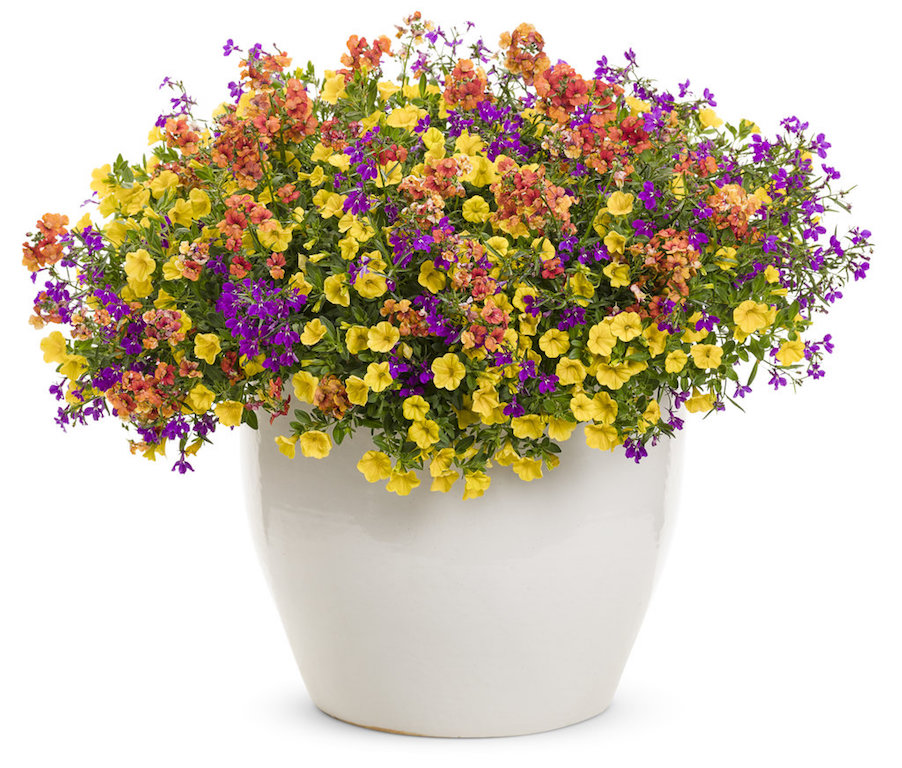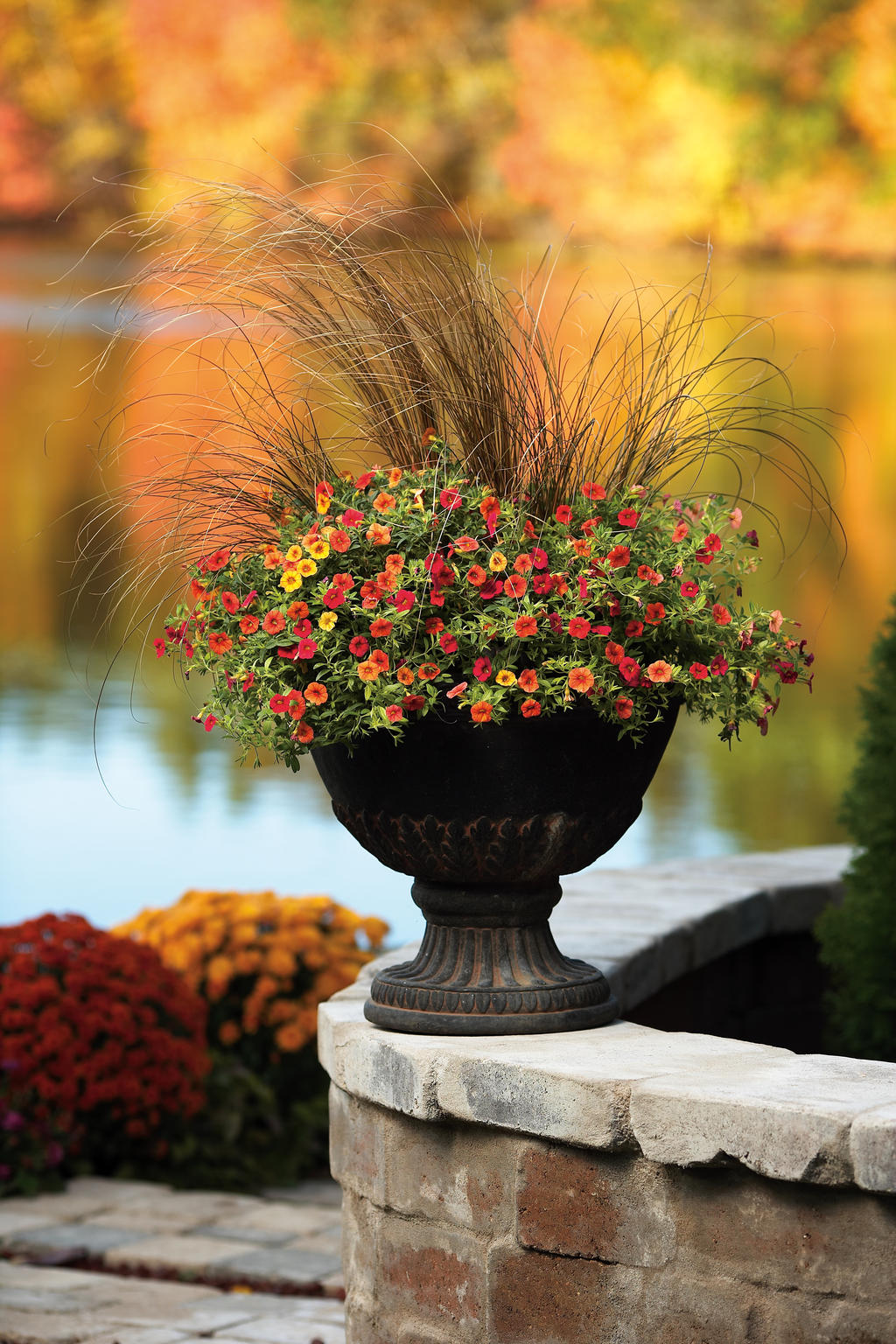Fall Potted Plants: Container Gardening in Fall
There are some special considerations when it comes to containers for fall color.
As summer slides into the dog days and heads towards fall, we may find ourselves thinking about freshening our container plantings. Maybe the heat or vacations have left your planters looking less than stellar. Maybe you're simply tired of what you have and looking for a change or want to get rid of the pinks and purples you loved in spring in favor of the more Autumn-like yellows, reds and bronzes. While the basics of design and care don't really change for fall, there are a few things to consider.
Choosing Plants
In spring, you are likely choosing plants, at least partly, for their ability to withstand summer conditions - in other words, bright sun and hot temps. When choosing plants for fall, their ability to withstand cool temperatures, including frost or even hard frost, is key to keeping your containers looking great for months.
Another trait to consider is the ability of the plant to bloom under shorter day-lengths. Some plants need longer days to bloom. The shorter days of fall and early winter can cause these fall potted plants to go out of bloom. There are plants that will bloom under shorter day lengths and do not mind, at all, if the temps get a bit frosty. And, no you are NOT limited to mums, ornamental kale and pansies - although they are great plants for fall. When looking at plants in our on-line database, plants that work for Fall are marked as having Fall Interest.
Fall is a great time to look to foliage for color. There are many plants with foliage that is most colorful when the temps are cool. Heuchera, such as our Dolce® series is one example, as are most, but not all, ornamental grasses. Foliage also adds color without the need for flowers. However, not all foliage plants are good for Fall color - even some whose color palettes are perfect for Fall. The two categories that immediately spring to mind are Coleus and Sweet Potato Vines. The colors are pitch perfect and they seem to make perfect sense. However, neither of them is at all frost tolerant - the first hint of frost is going to be damaging.
Hopefully your local garden centers are stocking plants that work for Fall, but it pays to ask questions of employees if you are uncertain about your potential purchases.
Planting
When potting up planters in spring, there are advantages to using fewer plants per container and leaving those plants plenty of room to grow. But, container gardening in the fall has a different set of circumstances. While you are likely planting your containers while the temperatures are still quite warm, those temps are going to quickly begin cooling off. As temperatures cool, plant growth slows or stops completely. This means that plants potted up in the fall aren't going to show the amazing growth you get from those planted in spring, despite potentially providing color for months. Fresh container plantings for fall container garden ideas is when stuffing your pot full of plant material, with little room for growth, makes sense. How full the container looks when you plant it is pretty close to how full it will look all fall.
Watering and Fertilizing
As mentioned before, the cooler temperatures of fall will lead to less plant growth. Well, cool temperatures and smaller cool weather plants also lead to plants using less water. Less water used means you don't need to water nearly as often as you've become accustomed to during the heat of summer. As always it is best to check if a planter needs water before irrigating. The deeper into fall you go, the less often you will need to water. Water Your Way to Happy Plants is a great refresher on best practices for watering containers. Don't be surprised if you need to water only once or twice a week.
Fertilizing is also different in Fall and is likely unnecessary. In spring, we suggest applying a controlled release fertilizer at the time of planting and then potentially supplementing with water-soluble fertilizer after a couple of months of growth. However, many of the controlled release fertilizers release fertilizers partially dependent on temperature. Colder temperatures means little to no fertilizer is released for plant use. However, unless you are in the deep south or sun-belt areas where container gardening in the fall is very extended and temperatures remain warm, your cool weather plants will not be growing vigorously enough to need fertilizer applications. If you do feel as if fertilizer would be helpful for your plants, an application of water-soluble fertilizer will be more effective for fall container garden ideas than controlled or slow-release fertilizers.
 Frost Protection
Frost Protection
While choosing frost tolerant plants is necessary, you might also want to add an extra level of protection for your plants when night temps get get close to 32 degrees. If temperatures are expected to get unusually chilly for a few nights, before rebounding back to average for that time of year, it might make sense to use an old sheet or other light-weight fabric to cover your plants. While doing this every night as temperatures decrease will be quite labor intensive and unnecessary, a bit of effort for a few unusually cool nights might be well-worth the effort.
Switch-Outs
If you use heavy decorative containers for your cool weather plants, such as ceramic or concrete, removing old soil and putting in new soil can be, literally and figuratively, painful. One way to make planting easier is to find lightweight plastic containers that are the right size and shape so you can plant the plastic container and then just  drop it inside of your decorative container. When you want to replant, simply pull out the plastic container, compost or discard the plants, refill and replant the plastic container and drop it back into the decorative planter.
drop it inside of your decorative container. When you want to replant, simply pull out the plastic container, compost or discard the plants, refill and replant the plastic container and drop it back into the decorative planter.
You can take it one step further and buy two or more plastic containers for each decorative container. A few weeks before you want to replace the current plant material, plant the extra liner. This will get the new plants time to settle in, and then when you are ready you can remove and "replant" your decorative planter in no time at all. This is also a great way to keep prominent containers looking fresh all summer and during container gardening in the fall, especially if you have an important event planned and want everything to look perfect for your fall container garden ideas.
Perennials in Pots
If you have perennials, or shrubs, in containers the article Pretty Potted Perennials covers the ins and outs specific to growing these types of plants in containers.





